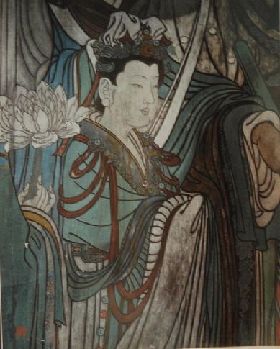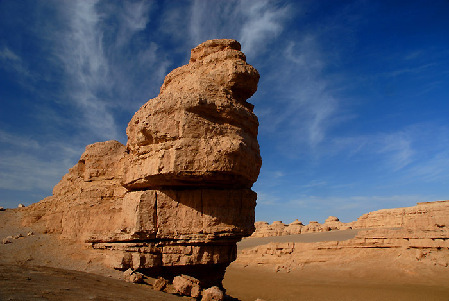An Introduction to Dunhuang
Dunhuang lies at the western end of the Hexi Corridor in Gansu Province in Northwest China, an oasis on the eastern edge of Taklimakan Desert. It is nourished by melted snow water from the Qilian Mountains. The ancient town used to be an important stop-over point on the Silk Road. The name "Dunhuang" was given in the Han Dynasty. In Chinese "Dun" means grandness and "Huang" means prosperity.

In the 2nd century B.C., Emperor Wudi of the Han Dynasty sent imperial envoy Zhang Qian to the Western Regions, opening up a trade route which was to be known as the "Silk Road" in history. The imperial court set up Dunhuang Prefecture in A.D. 111 and Dunhuang became a strategic town. Through this route Chinese culture and products, especially silk, were introduced to European and Middle East countries, and foreign culture and products such as Buddhism of India came to central China. Much of Buddhism is propagated through artistic forms, which were soon assimilated into the Chinese traditional culture. The result was that many Buddhist images were carved in caves in mountain cliffs along the Silk Road. Many of them have been well preserved. The best are those at Mogao in Dunhuang.

Source: chinatoday.com.cn
|

